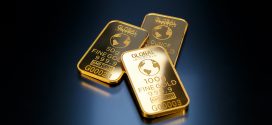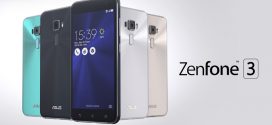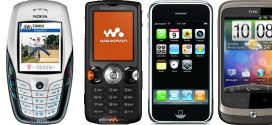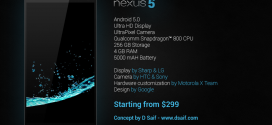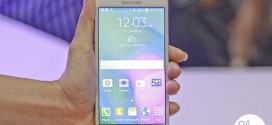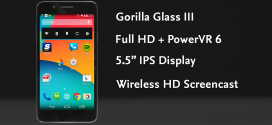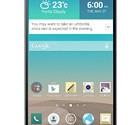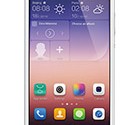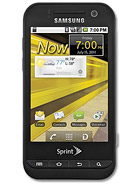 Today we shall be reviewing the Samsung Charge. This is yet another 4G phone and you know the drill, it doesn’t really work with normal GSM networks you are used to. However, service providers can offer such networks as well. This device was made for a service provider called Sprint. I can’t say I’m too familiar with this provider, but then again each country has their own providers. Few have actually gained so much recognition that they have become famous around the world.
Today we shall be reviewing the Samsung Charge. This is yet another 4G phone and you know the drill, it doesn’t really work with normal GSM networks you are used to. However, service providers can offer such networks as well. This device was made for a service provider called Sprint. I can’t say I’m too familiar with this provider, but then again each country has their own providers. Few have actually gained so much recognition that they have become famous around the world.
But that’s a story for another time. Now, however, let us stop with the dilly dallying and commence with this review.
GENERAL
This part of the review focuses mostly on the supported networks of the Samsung Charge and the dates ( both announcement and release ). The Samsung Charge supports the following networks : CDMA 800 / 1900 / 850 as 2G networks and CDMA 2000 1xEV-DO as 3G networks. The Samsung Charge was announced in June 2011 and was released shortly after in August 2011.
BODY
This part of the review covers the body of the device and the aspect part mostly. You can find details here about the size, weight and any distinguishing marks of the device which might make it stand out from the crowd. The Samsung Charge is around 116.1 x 60.5 x 11.7 mm big and weighs somewhere around 116 grams. All and all it isn’t that big. It doesn’t have any distinguishing marks either.
DISPLAY
This part is focused mostly on the display of the device, mainly : the type of screen, the screen size, resolution and pixel density as well as the existence of any distinguishing marks related to the display. The Samsung Charge has a TFT capacitive touchscreen with around 256 thousand colors. The screen of the Samsung Charge is around 3.5 inches big and supports a resolution of around 320 x 480 pixels. The pixel density of this screen is close to 165 ppi, which is pretty good for this type of screen, considering that they are known to be quite weak compared to the AMOLED or LCD screens.
SOUND
This part of the review covers mostly the audible capabilities of the Samsung Charge, things such as the alert types, the loudspeaker and the 3.5 mm jack as well as the existence of any means of enhancing the sound on this device. The Samsung Charge is pretty basic or default on the sound part since it has no means of enhancing the sound whatsoever. It has everything at standard level on this part. The alert types are : Vibration, MP3 and WAV ringtones. Also, the Samsung Charge has both the Loudspeaker and the 3.5 mm jack.
MEMORY
This part of the review covers the memory of the Samsung Charge, mainly the RAM and the internal storage space, as well as means of enhancing it. The internal storage space of the Samsung Charge is around 1 GB of ROM memory. Upon purchasing this device you get a 2 GB MicroSD card included in the price of the phone. If that isn’t enough, you can always buy another MicroSD card. Any will do as long as it doesn’t exceed 32 GB. The RAM memory of the Samsung Charge is around 512 MB, which is half decent in my opinion.
DATA CONNECTION
This part covers the data connectivity of the Samsung Charge, mainly things such as : the GPRS and EDGE, the speed, the WLAN, the Bluetooth and USB connection etc. The Samsung Charge doesn’t have GPRS or EDGE, but then again few 4G phones do. The speed of the Samsung Charge is Rev. A up to 3.1 MB/s ( as is the case of most 4G phones ). The WLAN of this device is a Wi-Fi 802.11 b/g/n with WiMAX and Wi-Fi hotspot ( however upon activating this certain charges may apply ). The Bluetooth of the Samsung Charge is a Bluetooth v2.1 with A2DP. The connection between this device and the PC can be done via the Samsung Charge’s MicroUSB v2.0 port.
CAMERA
This part of the review will cover the camera of the Samsung Charge, to be more exact : the main and secondary cameras, their features and their capabilities. The main camera of the Samsung Charge is a 3.15 MP snapper capable of photographing at around 2048 x 1536 pixels. The features of the Samsung Charge’s main camera are as following : autofocus, LED flash and geo-tagging. The main camera is also capable of recording video although I have no idea at what quality or with how many frames per second. The secondary camera is a 1.3 MP frontal snapper with no features to talk about.
BATTERY LIFE
This part of the review covers the battery of the device, which we know is of utmost importance in any device. You can find details here about the type of battery and the time it can function and under which circumstances. The battery of the Samsung Charge is a Standard Li-Ion 1500 mAh battery. It is able of functioning for around 300 hours in stand-by mode and for up to 6 hours of talk-time. However put something like apps and games or music playing and that time plummets drastically.
HARDWARE
This part focuses on the hardware components of the Samsung Charge, such as : processor, mother board and graphics card. The Samsung Charge sadly only has two of the three : the processor and the mother board. The processor of this device isn’t something you can easily recognize since it isn’t from any known producers. We only know its strength, which is 1 GHz. The chipset of the Samsung Charge, or mother board if you prefer, is a Qualcomm MSM 8665. All and all it’s pretty decent as far as hardware goes, although without a GPU you can’t actually run certain apps or games which are more video-demanding. Also, you can kiss anything that is slightly 3D goodbye, unless the processor is strong enough to double as a GPU, which I highly doubt.
SOFTWARE
This part will cover the operating system of the device, mainly the current version of the OS and whether or not there are possibilities of upgrading to a better one. The Samsung Charge has Android OS v2.3.4 Gingerbread pre-installed on it. It has no official update to ICS should you desire to upgrade, however you can download and install Ice Cream Sandwich anyway from unofficial sources. Still, that procedure is highly not recommended since it can damage the device in more ways than you can imagine.
FEATURES
This part of the review covers some of the more general features and capabilities of the device. The Samsung Charge’s sensors are as following : Accelerometer, Proximity and Compass. The messaging on the Samsung Charge can be done via : SMS ( with threaded view ), MMS, E-mail, Push Mail and IM. The browser of the Samsung Charge supports both HTML and Adobe Flash. The Samsung Charge doesn’t have a radio, but I’ve said before how to fix that. The GPS of the Samsung Charge supports A-GPS usage. The Samsung Charge also has Java via Java MIDP emulation. The Samsung Charge only comes in a single color : graphite.
Here is a brief list of what the Samsung Charge can do :
- Made partially by recycled bio-plastics
- MP4/H.264/H.263 player
- MP3/WAV/eAAC+ player
- Organizer
- Document viewer
- Google Search, Maps, Gmail, YouTube, Calendar, Google Talk, Picasa integration
- Voice memo
- Predictive text input
This concludes our little review of the Samsung Charge. If you feel that anything is lacking from this review feel free to leave your suggestion for things which should be added in the comment section below and I shall be sure to take them into consideration when writing my future projects.
In the mean time, if you desire this phone and would like to purchase it, feel free to click HERE.

